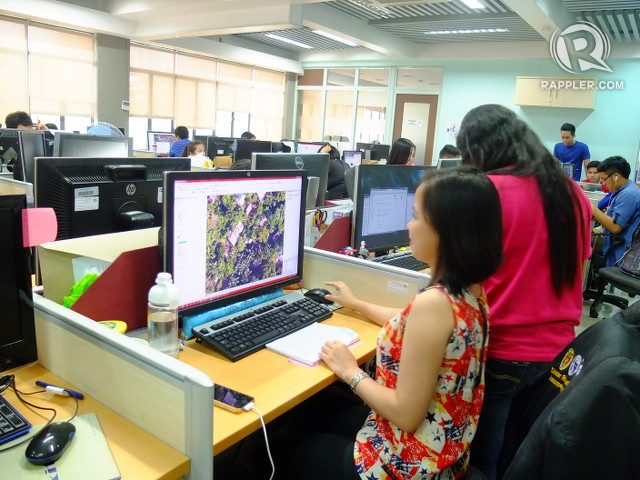SUMMARY
This is AI generated summarization, which may have errors. For context, always refer to the full article.

MANILA, Philippines – “We have to take care of the human resource. That’s more important than any technology we have developed.”
This was the appeal of Nationwide Operational Assessment of Hazards (Project NOAH) Executive Director Mahar Lagmay amid reports that state weather bureau PAGASA will take care of the tools and technologies developed by Project NOAH once the program ends on February 28.
“As a scientist, ang concern ko lang po ay to be able to secure the human resource, ‘yung mga tao…. We have invested heavily on them; our intention is to maintain these disaster scientists,” Lagmay said during a press conference on Tuesday, January 31.
(As a scientist, my concern is to be able to secure the human resource, the people.)
As it is, their team of 80 was reduced to 40 people. Lagmay said losing the rest of the team will be “losing the gain” of “highly-skilled” researchers and scientists who are “very passionate [and] very loyal to our country.”
“Ang apela ko sa lahat ay sana po ay ituloy niyo ang suporta sa Project NOAH. [Ang] researchers and scientists po ay halos buwis-buhay na, [they] work beyond [the] call of duty, ‘pag may bagyo – sana may pagkain, ‘di na nga sila natutulog. Suporta lang. We work best if we’re part of government,” he added
(My appeal to everyone is to continue supporting Project NOAH. Researchers and scientists risk their lives, work beyond the call of duty, when there are storms – there could be some food, but they don’t sleep. Just support us. We work best if we’re part of government.)
Lagmay also urged the government to think about Project NOAH – the country’s flagship disaster prevention and mitigation program – as an investment, and not a cost.
“Hindi po tumitigil ang ating pag-aaral (Our research work doesn’t stop). Every disaster unfolds in a different way. When they unfold, we learn lessons from them,” he added.
In a statement on Monday, January 30, the Department of Science and Technology (DOST) said they welcome new project proposals “if there is a new study to be made.”
But Lagmay said there has been no response – whether an approval or a disapproval – regarding a project proposal they submitted last November.
“Of course, when there’s no answer, we’d like to think of future of people working in Project NOAH. Without an answer, we know it will end. If it ends, we have to think of salaries of researchers and scientists,” he added. (READ: Disaster responders urge Duterte to #SaveProjectNOAH)
He also explained that their work in Project NOAH goes beyond weather forecasts; they also provide hazard-specific, area-focused, and time-bound information.
“We translate forecasts to risk information. We translate it to useful information that communities can use,” he added.
‘Why scrap the name?’
Since the news broke that Project NOAH will end in February, about 15 groups have already reached out to Lagmay and his team, including representatives from the Senate and the Office of the President.
“In fact, there’s a bill pending sa Congress – the NOAH Institutionalization Bill. Matagal na namin gusto maging (We wanted to) institutionalized ang Project NOAH. We can’t have researchers [and] scientists [as] contractuals for a long time,” he added.
Keeping the name Project NOAH is also important, Lagmay said, because Filipinos already know the brand and it is being used already even in textbooks.
“Why scrap the name ‘NOAH’ when it works?” he asked.
What happens after February 28? Lagmay said they won’t be able to provide the disaster information needed especially during times of disaster.
“Every time may bagyo, ‘pag pumapasok ‘yan, we are called in. So mawawala yung info na pino-provide namin: risk assessment,” he explained.
(Every time there’s a typhoon, when it enters, we are called in. So we will lose information we provide: risk assessment.)
He added: “I’d like to believe we were able to contribute work in NDRRMC. The fact that we’ve been called in time and time again means we have been useful in providing information.” – Rappler.com
Add a comment
How does this make you feel?
There are no comments yet. Add your comment to start the conversation.